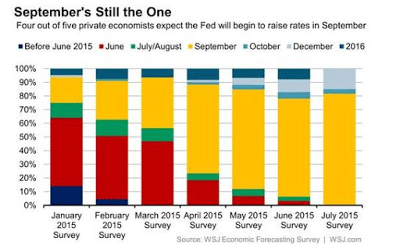Should the Bank of Japan Consider the U.S. Fed Method?
The Bank of Japan is engaged in the most aggressive asset purchases, and yet it has largely failed to lift inflation. National consumer prices for June will report at the end of this week. The headline rate expects to fall to 0.3% year-over-year from 0.5% in May. This would be the smallest increase since June 2013.





